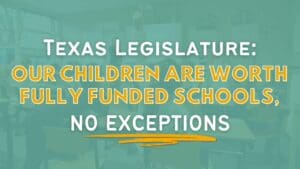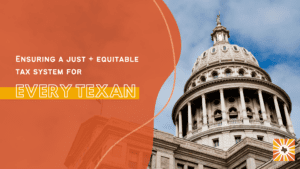
Tax Breaks & Incentives
The type of tax system we need should provide enough revenue to maintain public services and also divide up the responsibility for funding services according to a household’s ability to pay. Unfortunately, our tax system gives the wealthiest Texans and corporations a pass in contributing fairly to state needs.

Background
In the search for new sources of state revenue to fund the much-needed remodeling of our school finance system, many observers have looked to tax exemptions and other tax breaks that reduce our state’s ability to maintain public services. But finding new revenue simply by repealing exemptions is not as simple as it looks.
For instance, almost half of the value of state sales-tax exemptions is for items taxed under a different law, such as motor vehicle sales, gasoline/diesel, and insurance premiums. In other words, businesses and people in Texas don’t pay sales tax on these items because they are already paying taxes some other way.
But many sales tax exemptions favor robust industries that could be contributing more to supporting public services. Lawmakers should examine these exemptions to determine if they are cost-effective or whether we could use the revenue lost to them more productively to improve our public schools.
When Texas adopted the sales tax in 1961, the state had a mid-century manufacturing economy, so the sales tax applied only to the sale of goods and not consumer services like cable TV or computer programs. Now, of course, we live in a 21st Century service economy, but many services are still not subject to the sales tax. These “service exclusions” reduce state revenue by at least $8 billion a year.
School property tax exemptions reduce the property taxes received by school districts statewide by nearly one-third. Eliminating some of these exemptions could increase funding for public education. But, like repealing sales tax exemptions, increasing school revenue by eliminating property tax exemptions is not as easy as it looks.
However, one homestead exemption stands out as long past its sell-by date – the local-option percentage exemption. The Legislature created this option in 1981, when comprehensive property tax reform for the first time required appraisal of all homes at their full market value. The exemption was intended to cushion the “sticker shock” resulting from the rapid increase in appraisals in some communities. Almost four decades later, the rationale for the exemption is no longer applicable because of the 10 percent cap on appraisal values.
Our Staff

Dick Lavine
Senior Fiscal Analyst, Invest in Texas

Shannon Halbrook
Senior Fiscal Analyst, Invest in Texas

Samuel Cervantes
Analyst, Data & Policy


